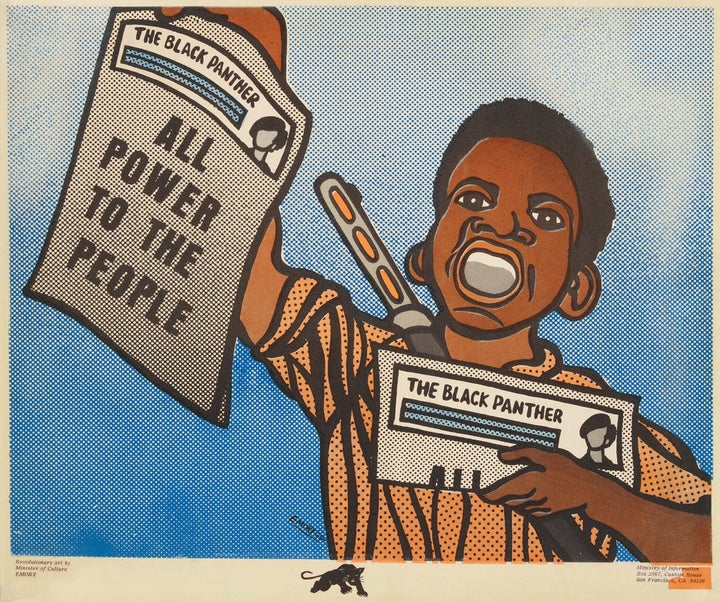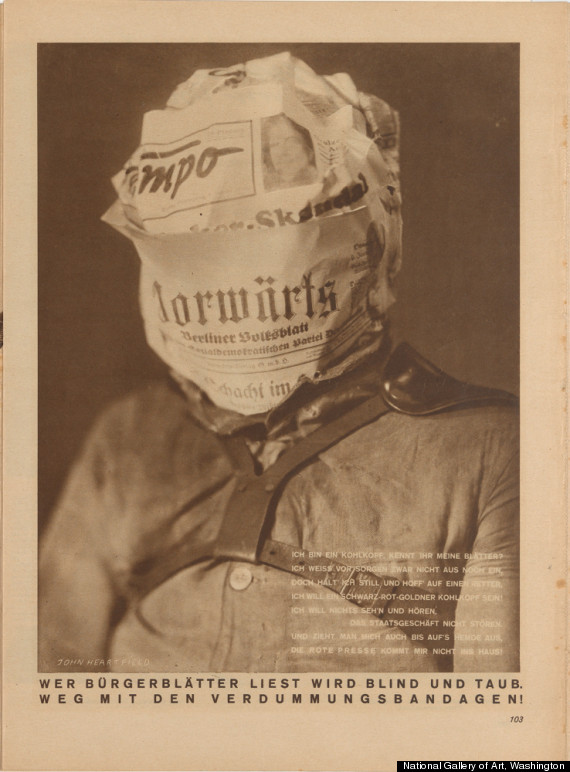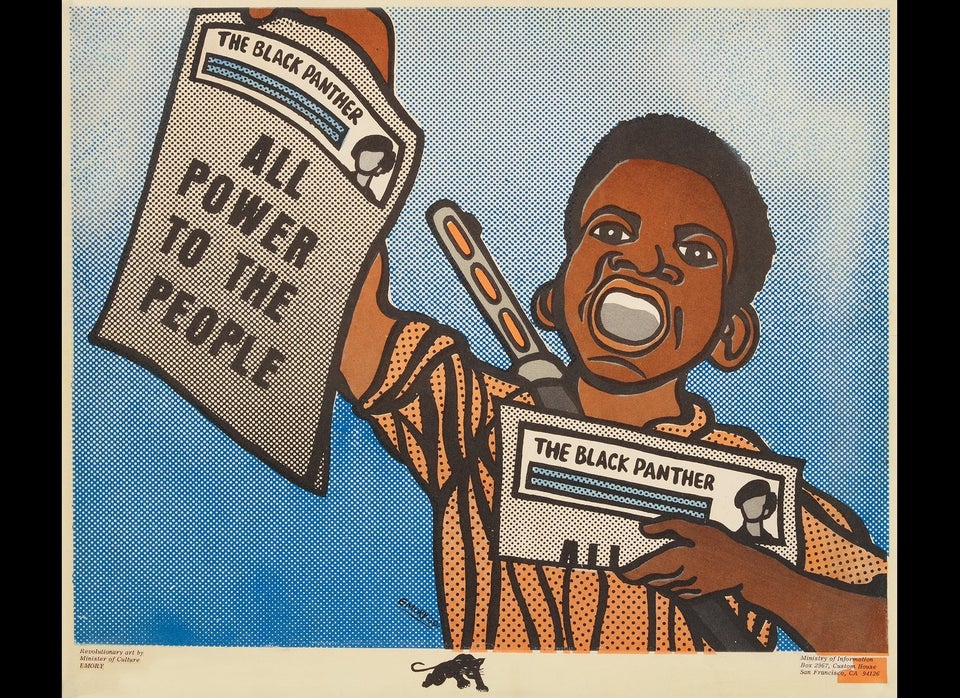
From Pablo Picasso to Robert Rauschenberg, the newspaper has long been a medium for fine art, working its way into some of the most well-known artworks through the process of cutting, copying, or rewriting the text.
The National Gallery of Art in Washington, D.C. is celebrating the relationship between papers and the arts in a new exhibition titled "Shock of the News." The 65-piece exhibit is arranged chronologically, surveying a century of artists' reappropriation, beginning with F. T. Marinetti, the father of the Futurists' manifesto that appeared on the front of Le Figaro on February 20th, 1909. Three years later, Pablo Picasso demonstrated what has become known as the first conscious incorporation of the newspaper into a modern work, when he included a small piece of text into his 1912 collage "Guitar, Sheet Music, and Glass." So began the newspaper's role as an artistic medium; a ready-made canvas infused with language and imagery relevant to the place and time of each work.
Beyond Marinetti and Picasso, the exhibition shows many more works from the early 20th century, spanning movements from cubist and Dada, displaying the art of photomontage creators like Hannah Hoch, Arthur Dove, Juan Gris and Man Ray. Paintings and installations from WW II-era to the 1980s, demonstrate how the newspaper became a point of references for those artists seeking to critique the political and social environment in which they existed. John Heartfield, a German artist in the 1930s, used scraps of official text from the Social Democratic Party as well as a mass-marketed tabloid, addressing both the party and the press with his caption: "Whoever reads bourgeois newspapers goes deaf and blind." This trend was followed by Hans Richter and Jean Dubeffet, as well as by Emory Douglas, whose 1969 "All Power to the People" depicted a young boy selling Black Panther papers.

John Heartfield. "Whoever reads bourgeois newspapers goes blind and deaf. Away with bandages that make you dimwitted!," published in Arbeiter-Illustrierte-Zeitung, vol. 9, no. 6, February 9, 1930.
Moving into the latter half of the 1900s, the exhibit touches on multimedia stars like Rauschenberg, Cage and Jasper Johns. By this time, incorporation of the news evolved to not only serve as a critique on political leanings, but a exploration of the ways in which readers recognize facts from the images and text provided to them. Sarah Charlesworth and Felix-Gonzalez Torres used the paper for this purpose, constructing pieces made from multiple news sources, offering a kaleidoscopic and contradictory view of the same reality.
The exhibit ends at the turn of the 21st century, when politically-minded works moved into the realm of the Middle East. Still viewed through the eyes of the Western world only, the 100-year survey ends with works by Jim Hodges and Mario Merz, artists who are able to reflect on how far-reaching and ubiquitous the newspaper has become. Who says print is dead?
"Shock of the News" will be on view at the National Gallery of Art, Washington, from September 23rd, 2012, through January 27th, 2013.
Check out images from "Shock of the News" below and let us know what you think of the exhibit in the comments section.

